India is home to a lot of vegetables, including bhendi. Common names include Okra, Bhindi (Hindi), Dhenras (Bengali), Vendai (Tamil), Bhhindo (Gujarati), Bendekayi (Kannada), Ventaykka (Malayalam), and Asra-pattraka (Sanskrit). It is an annual herb that grows up to 2.1 m high, is hairy, and has palmately cordate leaves with 3 to 5 lobed lobes. Pyramidal pods measure between 12.5 and 30 cm on the plants. Tropical and subtropical regions produce the majority of this crop.
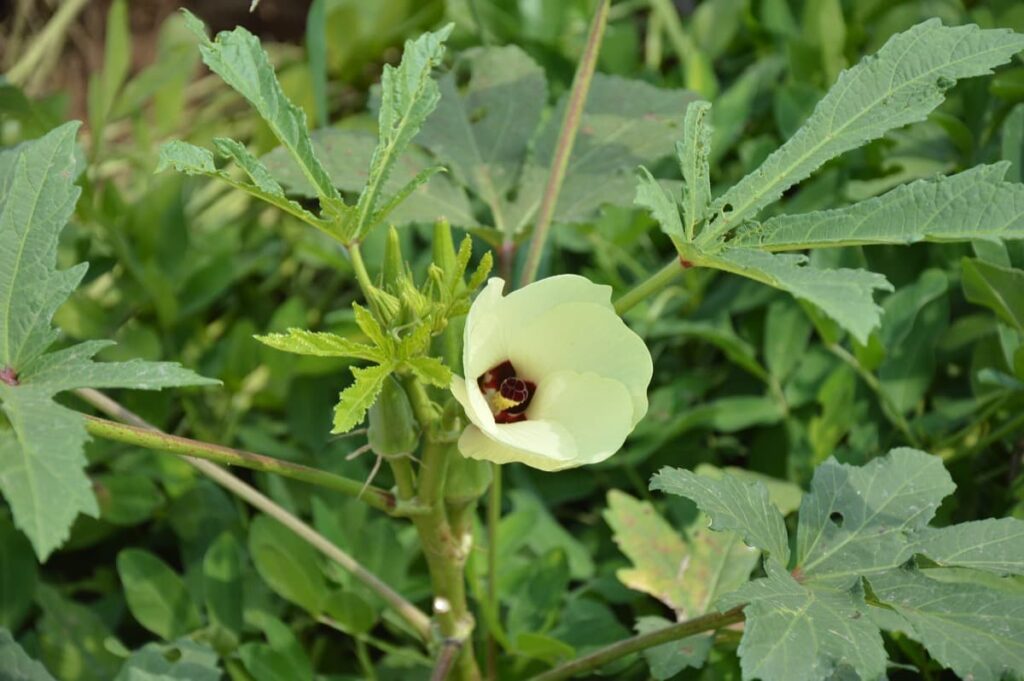
Young tender fruits of the plant are cultivated for use in curries and soups after cooking. This food is an excellent source of vitamins A and B, protein, and minerals. In addition to its high iodine content, it is useful in treating goiter. During the off-season, fruits are also dried or frozen. Dry fruit skins and fibers manufacture paper, cardboard, and fibers. Clearing cane juice to make jaggery requires roots and stems.
Fertilizer schedule for Okra
Perform a soil test to decide on fertilizer requirements
- It is recommended that okra be grown at a pH between 5.8 and 6.8. You can lower the pH level by gradually adding sulfur, making the soil more acidic, or raise the pH level by adding calcium carbonate or lime. Retest the pH of the soil with a soil pH test kit after adding the appropriate component in small amounts.
- Some farmers add Epsom salt to okra, but this is not universally recommended. Okra can benefit from the sulfur and magnesium contained in Epsom salts. However, it is important to take care when applying Epsom salt to okra since it can easily kill the plants if overapplied. Instead of applying Epsom salt to okra, use a general fertilizer.
- It is also possible to use chicken manure instead of chemical fertilizer. Phosphorus and potassium are important nutrients for crop production in chicken manure. Additionally, processed chicken manure has no objectionable odor.
Fertilizer types for Okra crop
Organic fertilizers can be found on the market in a variety of forms. There are, however, differences between each of them. For example, some organic fertilizers work better than others regarding growing okra. Organic fertilizers high in potassium and phosphorus are best for growing okra. By using this fertilizer, you will be able to promote healthy growth and produce large, bountiful crops.
In case you missed it: Pest and Disease Management in Okra: Causes, Symptoms, Chemical Control, and Biological Control
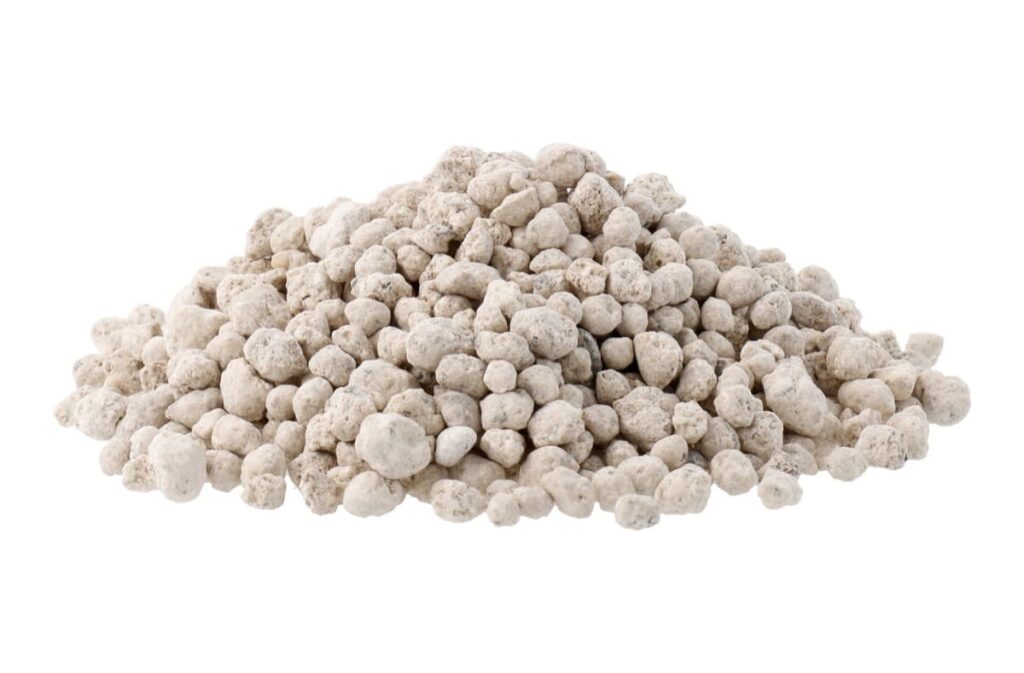
Organic fertilizers for okra
Minerals from mined rock and natural plant and animal materials are used to make organic fertilizers. These include manure, guano, ground bone, crushed shells, finely pulverized fish, phosphate rock, and wood. The main difference between organic and inorganic fertilizers is that they act quickly to feed the plant without actually enriching the soil. As a result, they may contribute to a toxic buildup of salts in the soil when overapplied.
Rock dust
Minerals and nutrients are found in rock dust derived from natural rock sources. Natural mineral and nutrient sources such as rock dust can fertilize okra plants. Like commercial fertilizers made from manure or other organic materials, rock dust contains magnesium, calcium, and potassium. It depends on your soil type; sandy soils absorb nutrients more readily than clayey ones.
Seaweed Fertilizer
Okra plants can benefit from seaweed fertilizer, which is a natural fertilizer. Nutrient-rich seaweed promotes plant growth. The best results can be achieved with seaweed and other natural fertilizers. This fertilizer can be used for indoor and outdoor plants, but you should use it carefully as it contains salt that may harm your plants if you use too much or water them too often.
Bone meal
Bone meal is made from animal bones and is a good phosphorus source. It will take some time for the bone meal to be absorbed into your garden, as it is a slow-release fertilizer. However, calcium is also found in it, which helps to build strong plants and trace minerals that are beneficial for overall health. Before planting okra seeds, you can apply bone meal once a year in late winter or early spring.
Blood meal
A blood meal is a high-nitrogen byproduct of the meat industry. Fertilizers and soil amendments can be made from it since it contains many essential minerals. It can also be used as a protein supplement for livestock, which makes it an excellent organic fertilizer for okra plants. Blood meal can be used as an organic fertilizer around okra plants when mixed with water.
In case you missed it: How to Grow Okra Plants Faster: Best Tips to Increase Flowering, Fruiting, and Yield

Manure of goats and horses
Manure of goats and horses are both good for okra. Manure is a good source of nitrogen, phosphorus, potassium, and calcium. It is also a good source of magnesium. It can be applied at the rate of 60 kg per acre in the late fall of spring.
Fish emulsion
Okra benefits greatly from this organic fertilizer. Fish waste products are used to make this type of fertilizer, which is rich in nutrients beneficial to plants. A great choice for those new to gardening or trying something different, it is also relatively easy to find and use. There are, however, a few things to keep in mind when using fish emulsion organic fertilizer.
Firstly, dilute your fertilizer before using it on your plants. Second, fertilize in the morning or evening when the sun is not as strong. As a result, the leaves will not burn. Finally, keep an eye on your plants and water them regularly; too much or too little water can cause problems with their growth.
Alternatively, organic fertilizers such as fish manure are both environmentally friendly and effective. The three essential nutrients that okra plants need to thrive are nitrogen, phosphorus, and potassium in fish manure. Additionally, fish manure contains trace minerals that are beneficial to plants.
Green manure from cover crops
Organic farmers have long used green manure to improve the quality of their soil. Green manure is plants grown to be plowed back into the ground, decomposing and releasing nutrients essential to plant growth. As a heavy feeder, okra benefits greatly from adding green manure.
After the plants have been harvested, fall is the best time to add green manure to your okra beds. Cover crops such as annual ryegrass, wheat, or buckwheat can be sown directly into the bed. Cover crops will winter-kill, so don’t worry about them taking over your garden. Please ensure they are under in the spring before you plant your okra seedlings.
Chemical fertilizer schedule
- The fertilization needs of the crop can be determined best through a soil test.
- Maintain a pH between 5.8 and 6.5 and optimal fertility levels according to soil test results.
- For 1,000 square feet of soil, apply between 10 and 20 kilograms of 10-10-10 or any fertilizer that provides between 1200 grams and 2.5 kilograms of nitrogen, phosphorus, and potassium.
- A delicate balance exists between okra’s vegetative (leaf production) and reproductive (pod production) processes.
- 100 kg of N, 60 kg of P2O5, and 50 kg of K2O are recommended for optimum yield. When planting, half of the N is applied, and the full doses of P2O5 and K2O. Following sowing, the remaining half of N is applied 30 days later, followed by earthing up.
- A deep narrow furrow is dug to apply fertilizer on one side of each sowing ridge. It is recommended to use nitrogen fertilizers like urea, calcium ammonium nitrate (CAN), and ammonium sulfate for this crop.
- Although tolerant of a wide range of soil types, okra can be sensitive to salt spray. It will be easier for the bush to produce more fruits if you fertilize it properly.
- There is a recommended dose for hybrid varieties of 150 kg N, 112 kg P2O5, and 75 kg K2O. Of this dose, 30 % of N and 50 % of P & K are applied as basal doses. Four weeks after sowing, the remaining 50% of P, 40% of N, and 25% of K are applied as the first top dressing. About seven weeks after sowing, a balanced amount of 30% N and 25% K is applied as the second top dressing.
- Until fruiting begins, additional nitrogen should not be applied to vigorous plantings to maintain plant growth and ensure pod production.
- Calcium nitrate (15. 5-0-0) should be side-dressed on okra from 450 to 900 grams per 100 feet.
- Three to four weeks after planting and again six to eight weeks later, sided dressing should be applied.
- There may be a need for additional calcium nitrate applications depending on rainfall and the length of time that okra is expected to produce. In addition, when blooms are concentrated at the top of the plant, it is important to supply additional nitrogen.
- A magnesium supply may also be necessary for okra, especially during flowering. Again, prevent the flowers from falling before the fruit is produced. Magnesium can be provided by Epsom salts once again.
- Add a tablespoon to a spray bottle filled with warm water to use Epsom salts. Spray the foliage and flowers of the plant with the mixture after mixing well. With this, we are trying to improve flowering, so it is at that time that it should be applied.
- When it comes to controlling the pH of the soil (it prefers a pH between 6-7), different additions can be made to increase and decrease it. The pH can be lowered with sulfur or raised with lime.
In case you missed it: Best Practices to Grow Okra at Home: Check How this Guide Helps Beginners
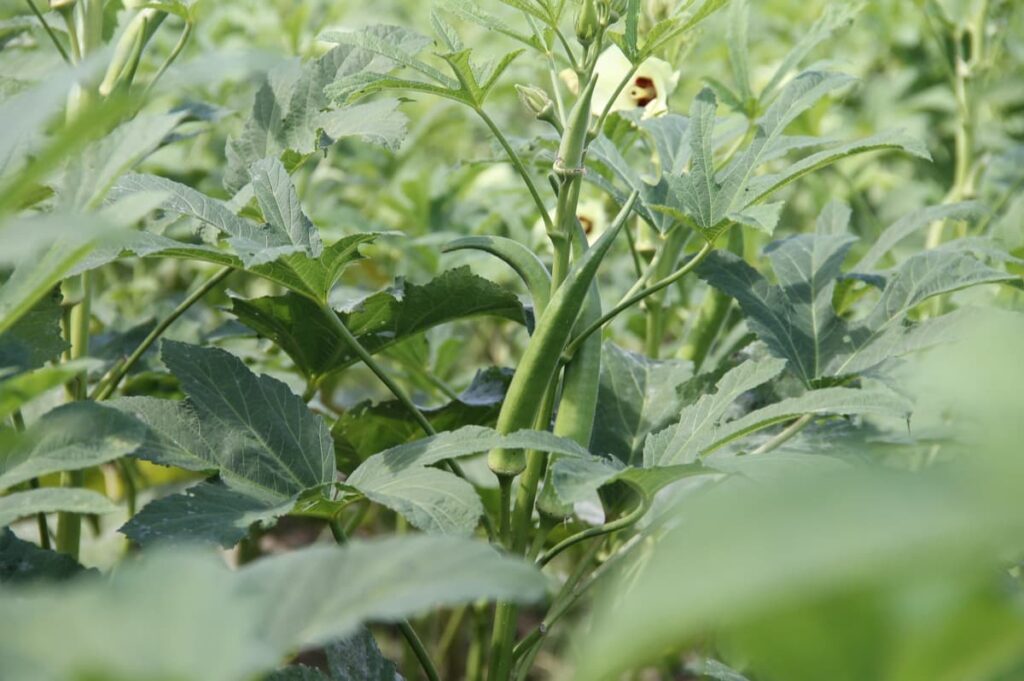
Application of Fertilizers
Apply Azospirillum and Phosphobacteria each at 800 g/acre mixed with 40 kg of farm yard manure before sowing.
- Common varieties: Basal dose farm yard manure at 10 tons per acre, N at 8 kg, P at 20 kg, K 12 kg/acre as basal, and 8 kg N/acre at 30 days after sowing.
- Hybrids: Basal dose farm yard manure at 16 tons per acre, N at 40 kg, P at 40 kg, and K at 40 kg/acre as basal and 100 kg N / ha 30 days after sowing.
Foliar nutrition
- On 30 and 45 days after planting, apply urea (10 g/l) and Muriate of potash (10 g/l).
- Three times at 0.5% (5 g/l) foliar application of water-soluble fertilizer 19-19-19 at ten-day intervals from 30 days after planting is recommended for hybrid plants.
In case you missed it: Barnyard Millet Farming: Production and Cultivation Practices, Planting to Harvesting, and Yield
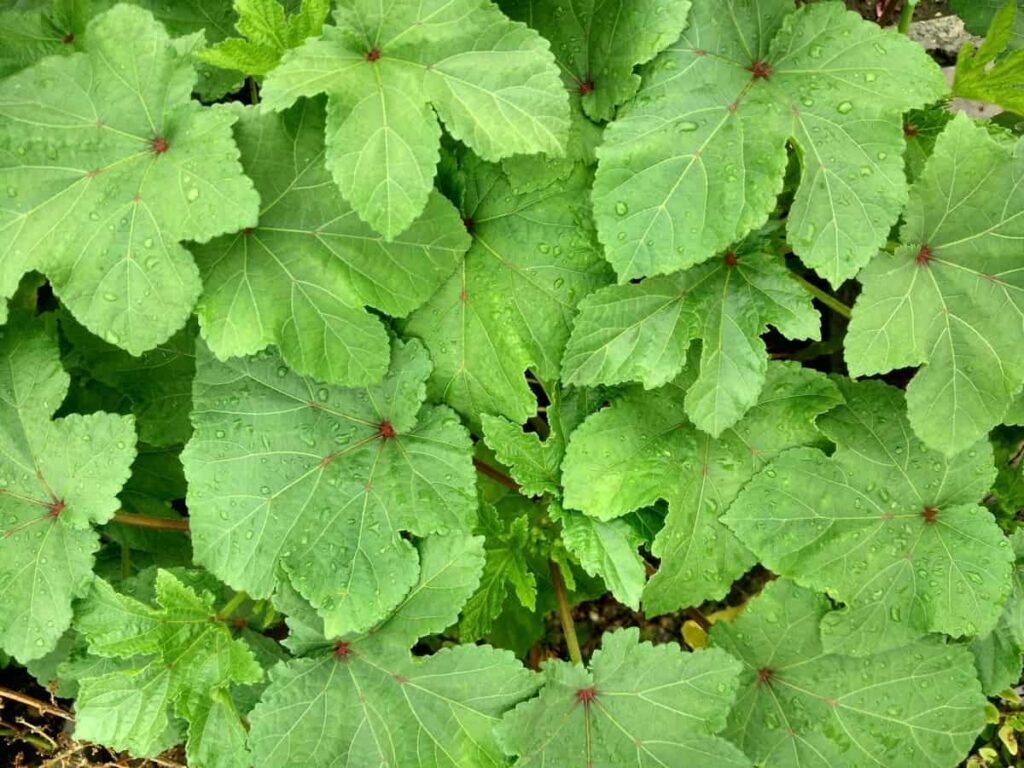
Fertigation schedule for hybrids
| Crop stage | Duration in days | N | P | K |
| Sowing to plant Establishment stage | 10 | 10 | 5 | 10 |
| Flower initiation to flowering stage | 30 | 30 | 10 | 30 |
| Flowering to fruit set | 30 | 30 | 5 | 30 |
| Alternate day from picking | 30 | 30 | 5 | 30 |
Mix homemade fertilizer for Okra
Prepare the soil for planting by mixing 10-10-10 fertilizers or homemade fertilizers for okra with a shovel, about 60 grams for every 100 square feet. Fertilizer labels indicate the percentages of three essential nutrients: nitrogen, phosphorus, and potassium. The 10-10-10 fertilizer is called “balanced” because it contains equal amounts of these three nutrients. Okra can benefit from homemade fertilizers, such as compost if you apply them sparingly. One cup for every ten feet of row is usually buried at a depth of a few inches.
Reapply fertilizer as a Side-Dressing
Fertilize plants twice, once when they are six to eight inches tall and once two to three weeks later. During the most vigorous growth periods, side-dressing is a method of fertilizer application on an as-needed basis. In a shallow trench about six inches from the base of the plants, apply the granulated fertilizer according to the package directions. Soil should be applied over the fertilizer.
In case you missed it: Fertilizer Schedule for Home Garden: Organic, Chemical, How and When to Apply
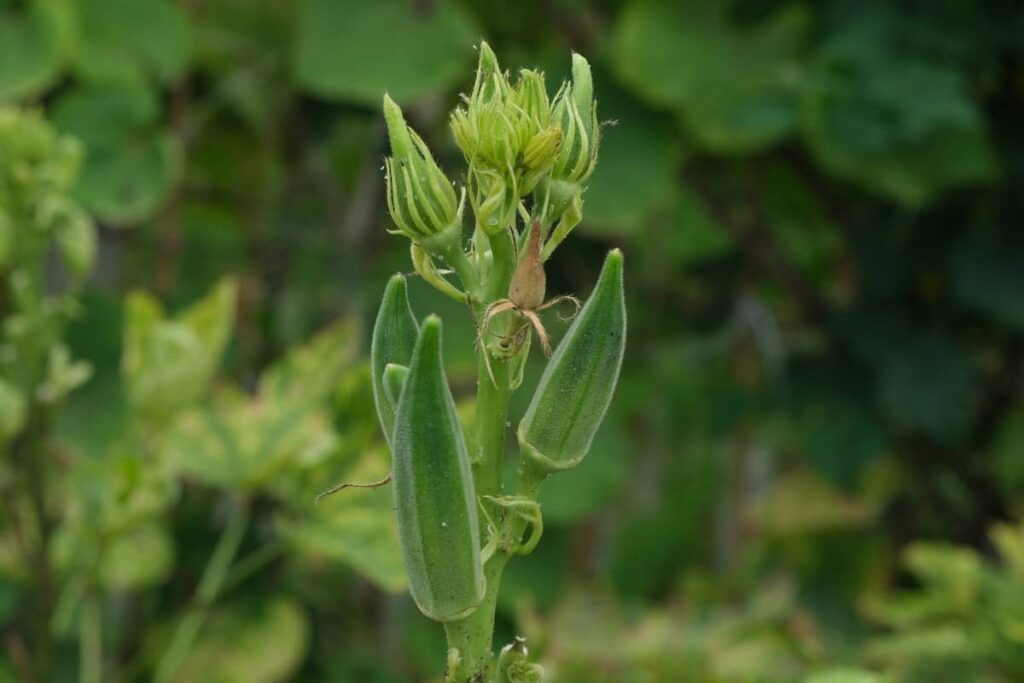
The fertilizer should be watered thoroughly into the trench to allow all nutrients to dissolve and be absorbed. Okra grown in containers may require additional fertilizer side dressings more often, ideally every three to four weeks. When you apply fertilizer, you should irrigate the soil. Apply additional fertilizer as a side dressing if heavy rains occur during the growing season. After heavy rains, previous fertilizer applications can wash away, leaving the soil depleted of nutrients. Fertilizers may need to be reapplied more frequently as a result.
Conclusion
The time to learn which nutrients your individual crops require is never too early or too late, regardless of whether you are a new or seasoned gardener. This step aims to create a healthy and productive growing environment, thereby reducing the impact of diseases and pest infestations.
- Management Pests and Diseases in Your Cotton Field
- Sheep Farming Business Plan for Beginners
- Aquaponic Farming at Home: A Step-By-Step Guide
- Profitable Village Farming Business Ideas in 2024
- High-Yield Aquaculture: Fast-Growing Fish for Farming
- Effective Fish Pond Construction Techniques for Beginners
- Irrigation and Water Management in Pineapple Farming
- Blossom to Harvest: Mastering Flowering and Pollination in Papaya Farming
- Pig Fattening Essentials: From Selection to Sale for Beginners
- Raising Wagyu Cattle: A Complete Guide for Premium Beef Production
- Soil Types and Their Water Holding Capacity
- Optimizing Irrigation Schedules for Coconut Groves for Enhanced Yield
- Espresso Your Garden: Coffee Grounds for Healthier Acid-Loving Plants
- The Best Soil Mix for Snake Plants: How to Mix Your Own Snake Plant Soil
- Green Thumb Success: Expert Tips for Cultivating Greenhouse Beans All Year Round
- Bloom All Year Round: The Ultimate Guide to Indoor Hyacinth Care
- Eco-Friendly Gardening: How to Make Liquid Fertilizer from Kitchen Waste
- Ultimate Guide to Grow Anise in Pots: Explore Seed Propagation to Harvesting
- Guide to Raising Chester White Pigs: Discover Breed Facts to Growth Management
- Mastering the Elegance: The Ultimate Guide to Weeping Cherry Tree Care, Planting, and Maintenance
- Ultimate Guide to Planting Garlic in Grow Bags: Growing Strategies for Beginners
- How to Fix Spider Plant Leaf-Related Problems: Natural and Organic Remedies
- 10 Reasons Why Your Tulsi Plant is Shedding Leaves: Home Remedies and Solutions
- Optimizing Growth and Yield: The Advantages of Palm Bunch Ash Fertilizer
- Utilizing Neem Oil Extract as a Natural Pesticide for Hydrangea
- From Soil to Harvest: Various Ways in Which Farmers Can Use AI Tools
- Steps to Encourage and Induce Citrus Flowers: A Comprehensive Guide
- How to Fix Snake Plant Leaf-Related Issues: Natural and Organic Remedies
- Transform Your Garden into a Fragrant Oasis with Raat Ki Rani (Night Blooming Jasmine)
- Discover the Ideal Chicken Breeds for Philippine Farms
- How to Create a Poultry Egg Farm Business Plan for Profits
- Grow Lemon Cucumbers Like a Pro: Insider Techniques for Bountiful Yields
- Ultimate Guide to Caring for Your Pink Princess Philodendron: Tips for Thriving Variegation
- Areca Nut Profit Per Acre: Calculating Yield and Cost of Cultivation
- How Kaveri Chicken is Becoming a More Profitable Breed in Indian Backyards
- Transform Your Barn: 9 Steps to Convert a Horse Stall into a Chicken Coop
